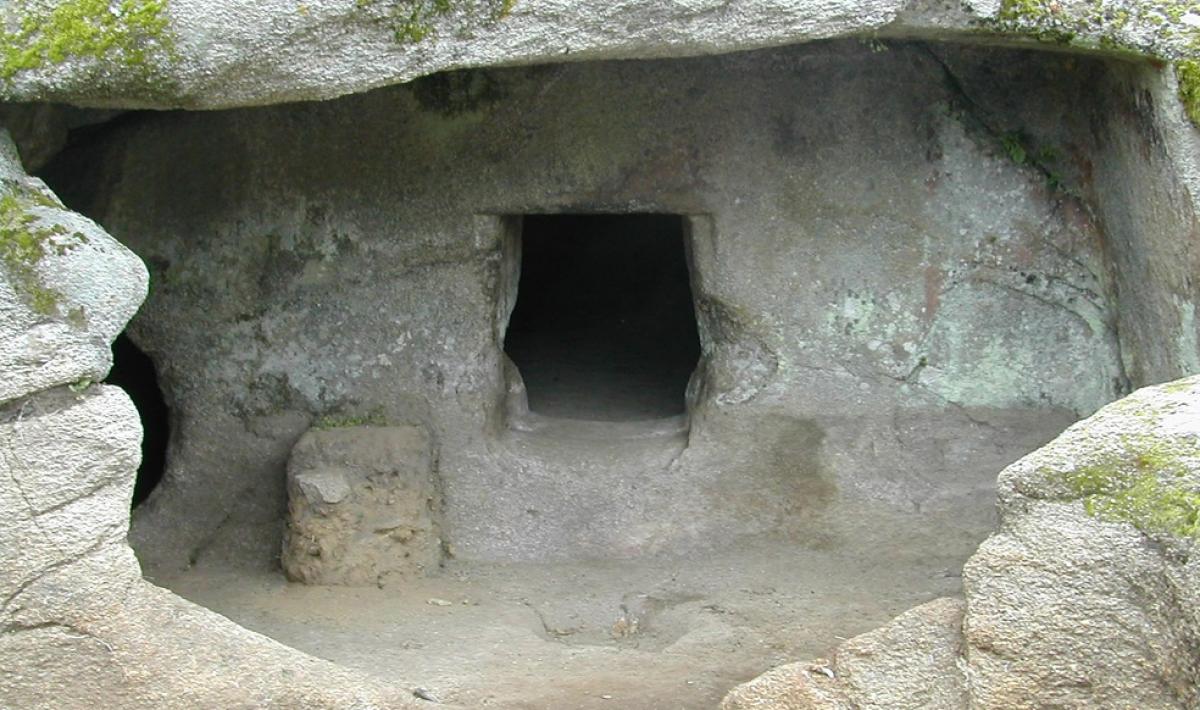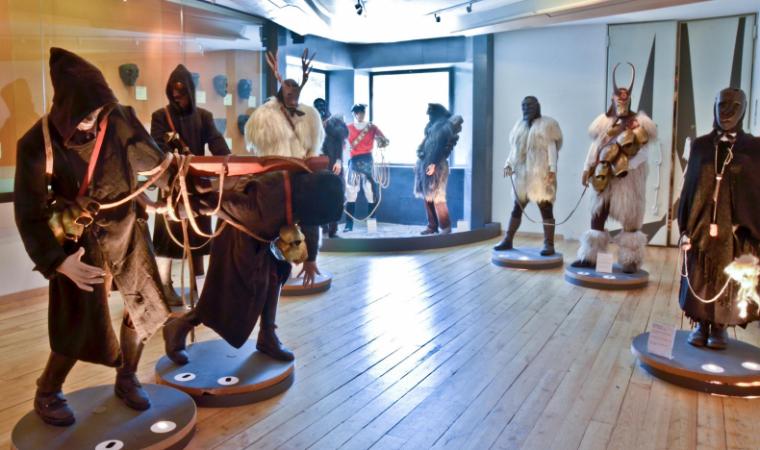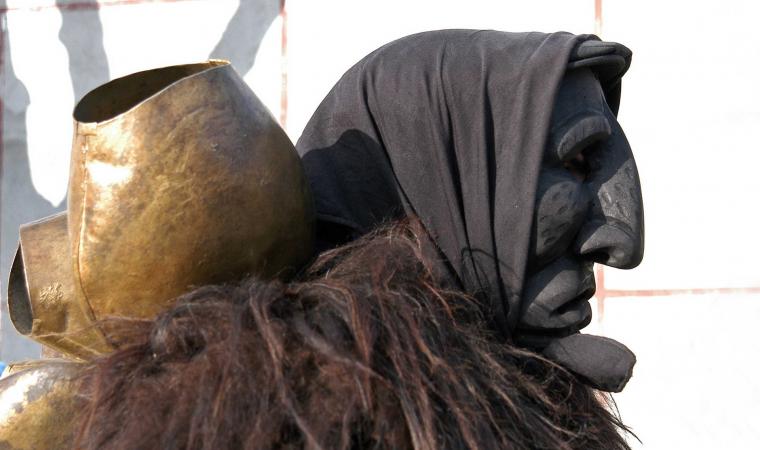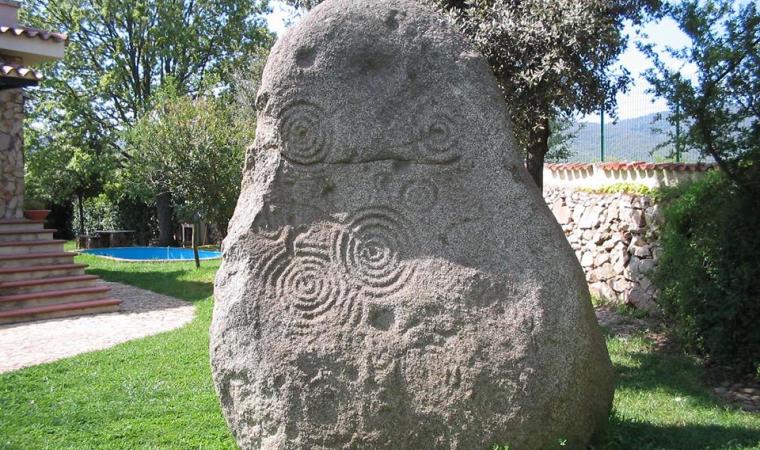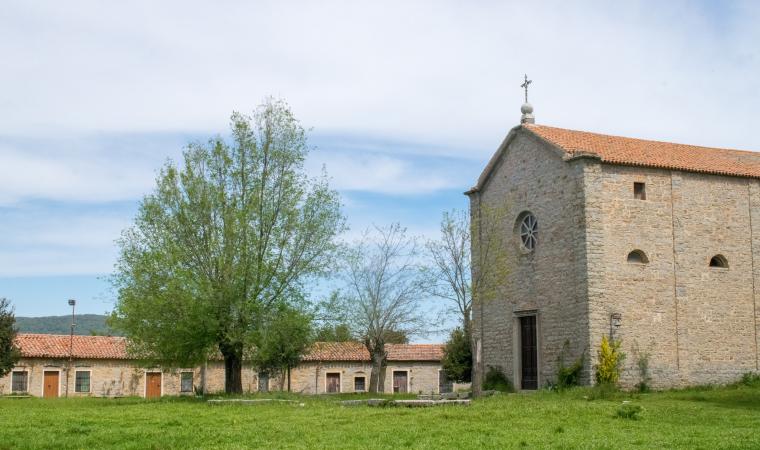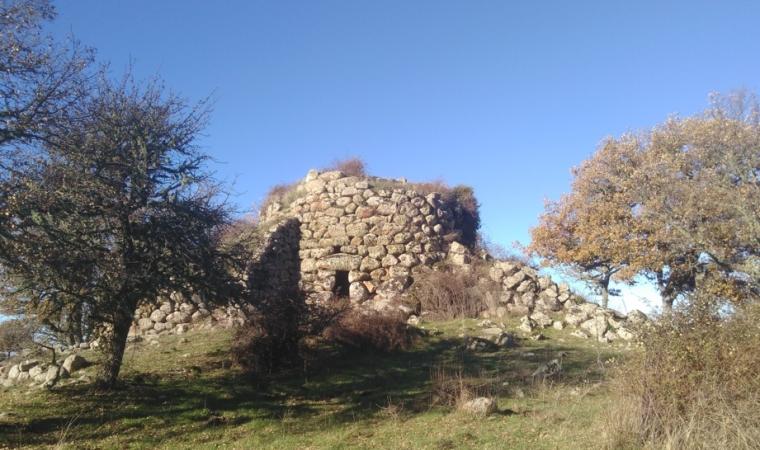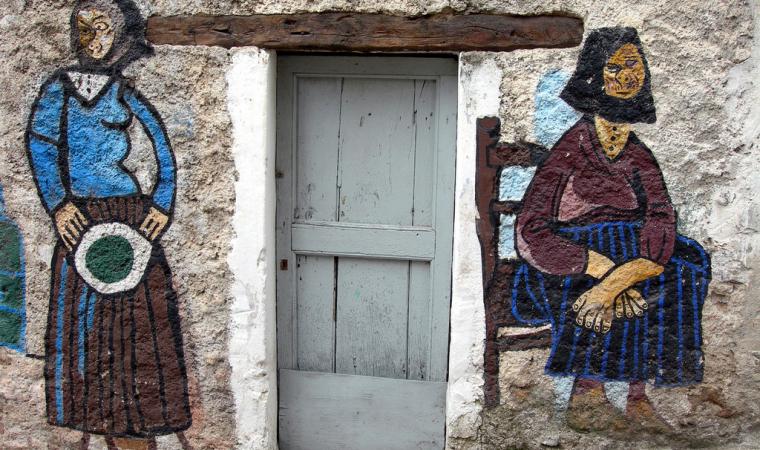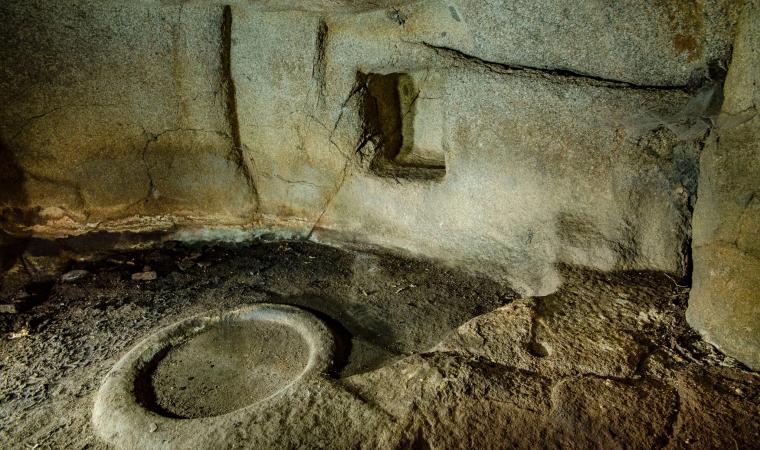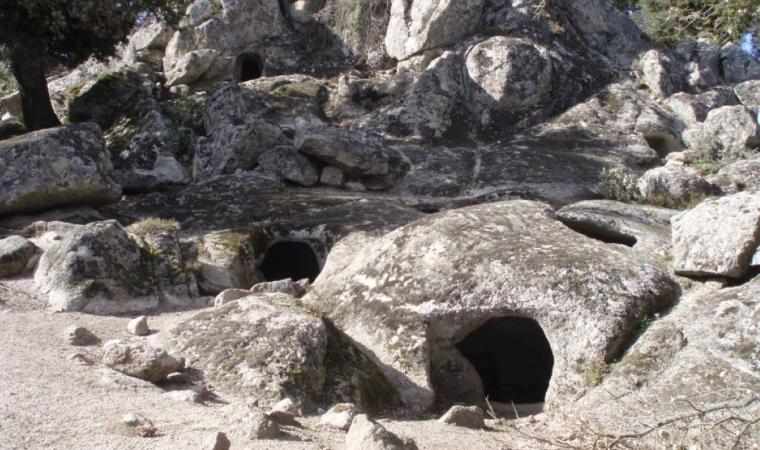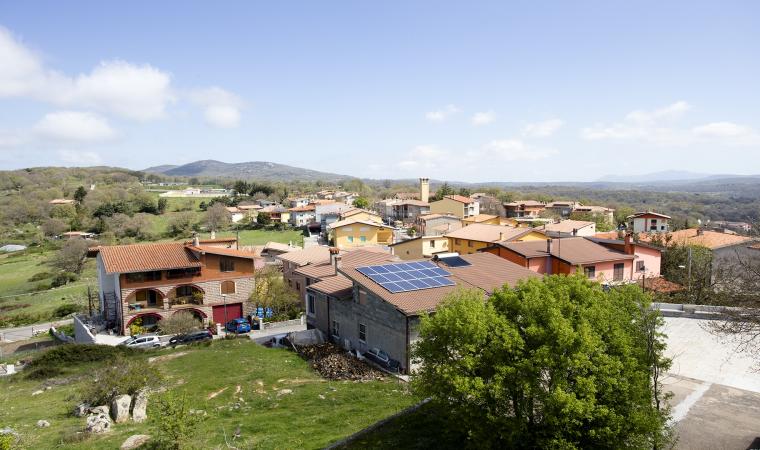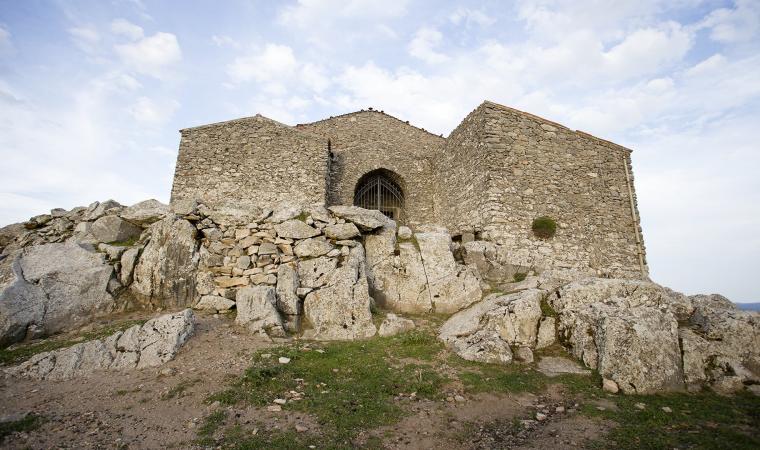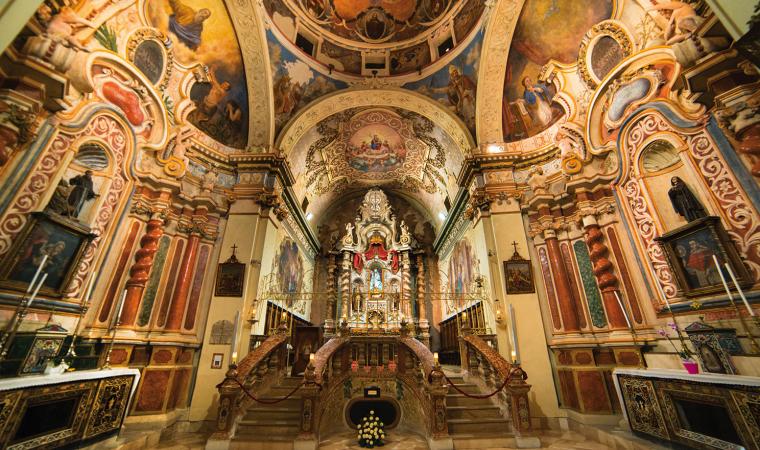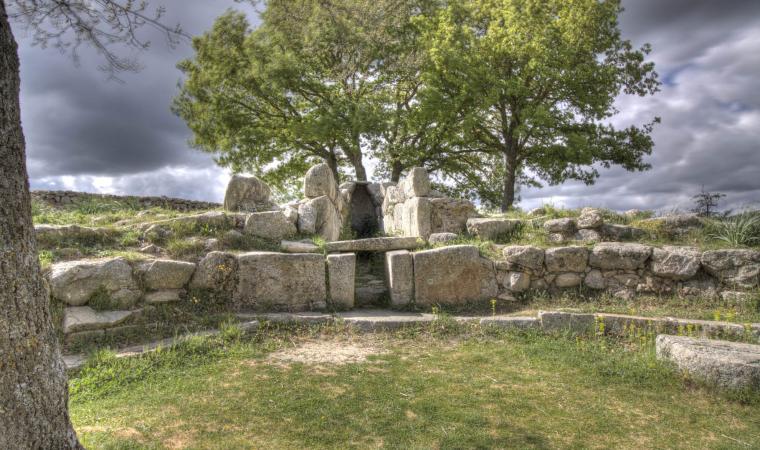Carved out of the granite rock and surrounded by a lush holm oak forest, it guards a small treasure: the necropolis of Istevene contains one of the very few Domus de Janas in the Nuoro area, decorated with symbolic motifs. The complex of tombs – called honcheddas – stands out along a mountainous spur, two and a half kilometres from Mamoiada, a famous village in the Barbagia area. There are six domus dug out at different levels of the rock face, half of them are single-cell and two of them are so small that they almost seem like niches.

